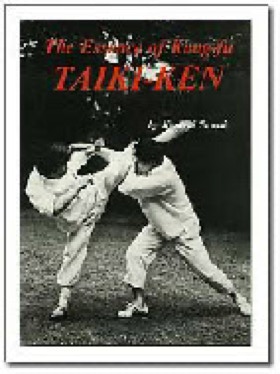Ancient Taoism in Contemporary
Management Training & Martial Art
MARTRIX ORG.
Get your feeling working!
MARTRIX ORG.
Get your feeling working!
Ancient Taoism in Contemporary
Management Training & Martial Art
For more information on Taiki surf to the Taikiken pages at https://taikiken.org You will get a good idea of the basics of the martial art and read about the people who practice it.
Read the full Taikiken book online, click here…..!
Download the full Taikiken book in pdf, click here…..!
Discovering the True Nature of Martial Arts: Taikiken and Budo Combat Techniques for Body and Ki Cultivation by Kenichi Sawai - Japan Publications
Preface of the book: Taikiken the essence of Kungfu by Master Kenichi Sawai.
Budo, the martial way, has prospered greatly in the past thirty years since the end of World War II, with many different combat techniques being taught worldwide. However, the current fashionable styles of budo raise concerns for me as some cannot be considered combat techniques. Due to television and movies portraying any fighting as oriental martial arts, it is difficult for me to comprehend what budo means today. Nevertheless, it is positive that many individuals are learning the martial arts and applying the good aspects of budo to their lives.
However, it is incorrect to sacrifice or distort the true nature of the combat techniques solely for the sake of introducing them to a larger audience. Although each age must develop its interpretation of budo, these interpretations must not diverge from the martial way's fundamental nature. In my opinion, budo as taught today has gone too far. If martial arts practitioners continue to bend to the times for the sake of spreading their individual teachings without seriously considering budo's true nature, there can be no development for the martial arts in the future.
The martial arts are matters of severity and gravity since their practice involved risking life and limb. Even though there is now little risk of life involved, their essential nature has not changed. Practitioners of the martial arts must not forget the element of severity based on the risk of life, and instructors must keep this nature in mind always. Men who use teaching martial arts as a way to make a living or who use their knowledge for selfish gain contribute nothing to the growth of budo.
During World War II, while on the front lines of the fighting in China, I learned the nature of human life and the true value of chüan-fa as a result of studying with Wang Hsiang-ch'i, the greatest chüan-fa expert in China of his time. Wang taught me the greatness of true budo. Although I had developed self-confidence in the martial arts, especially kendo and judo, before meeting him, Wang's teaching method required immense amounts of time and would be considered highly ineffectual in these days of unquestioning faith in rational ways of thought.
Understanding the martial arts requires a long time in which the individual must perfect their techniques and become convinced of their value and effectiveness. The person who would pursue the true nature of the martial arts cannot hope to understand what they are doing if they are concerned with which training methods are progressive and which are old-fashioned. The only method is to throw oneself into the martial arts with total devotion and to cultivate both one's body and one's ki.
After leaving China, I continued my own training but made no effort to teach others or spread my particular approach to the martial arts. A number of people have become convinced that my approach is right and have joined me in training. Nevertheless, I have no intention of opening a training hall or of teaching in the manner of an ordinary instructor.
When Japan Publications, Inc., asked me to produce this book, I hesitated, wondering if it were possible to explain my kind of kempo, which must be learned and mastered with the body, in text and photographs. I also entertained doubts about the value of martial arts learned from books. However, I reconsidered, believing that some individuals can understand the true meaning of something from examining photographs. Also, realizing that my knowledge of Taiki-ken has enabled me to live to a ripe old age in good health, I decided to go ahead with the writing and publishing of this book.
In conclusion, I would like to express my gratitude to two groups of people who assisted me in this project: my fellow trainees in Taiki-ken, and those who helped with the writing and publishing of this book.
First, my fellow trainees in Taiki-ken: my son-in-law Yoshimichi Sato; my eldest son, Akio Sawai; Mikio Goto; Kazuo Yoshida; Norimasa lwama; Yukio Ito; Masashi Saito; Yasuo Matsumura; Mitsuo Nakamura; Jan Kallenbach; and Roland Nansink. Second the cameraman, Hideo Matsunaga, and Chikayoshi Sanada, who was in charge of the editorial work.
Kenichi Sawai, March, 1976








